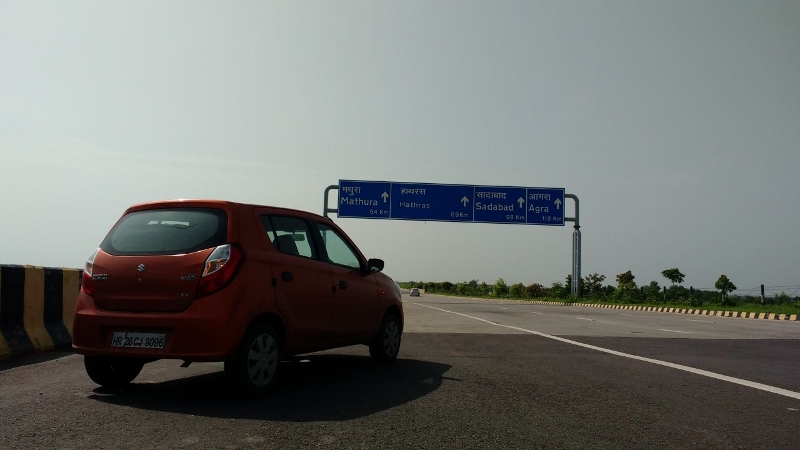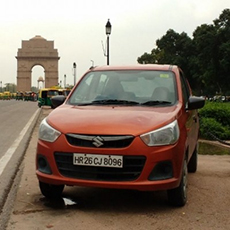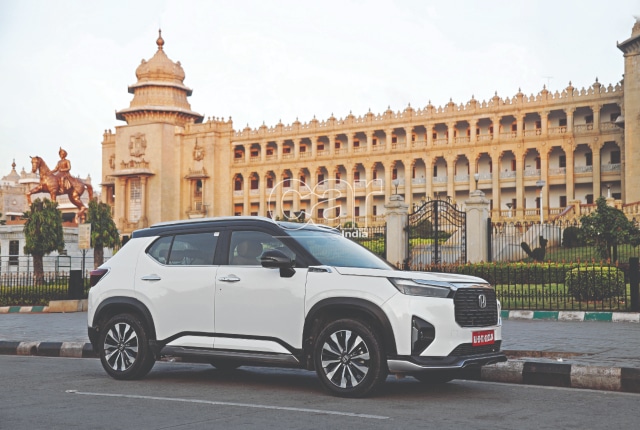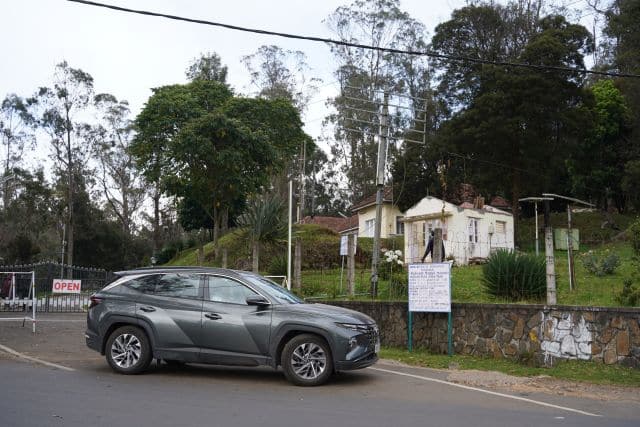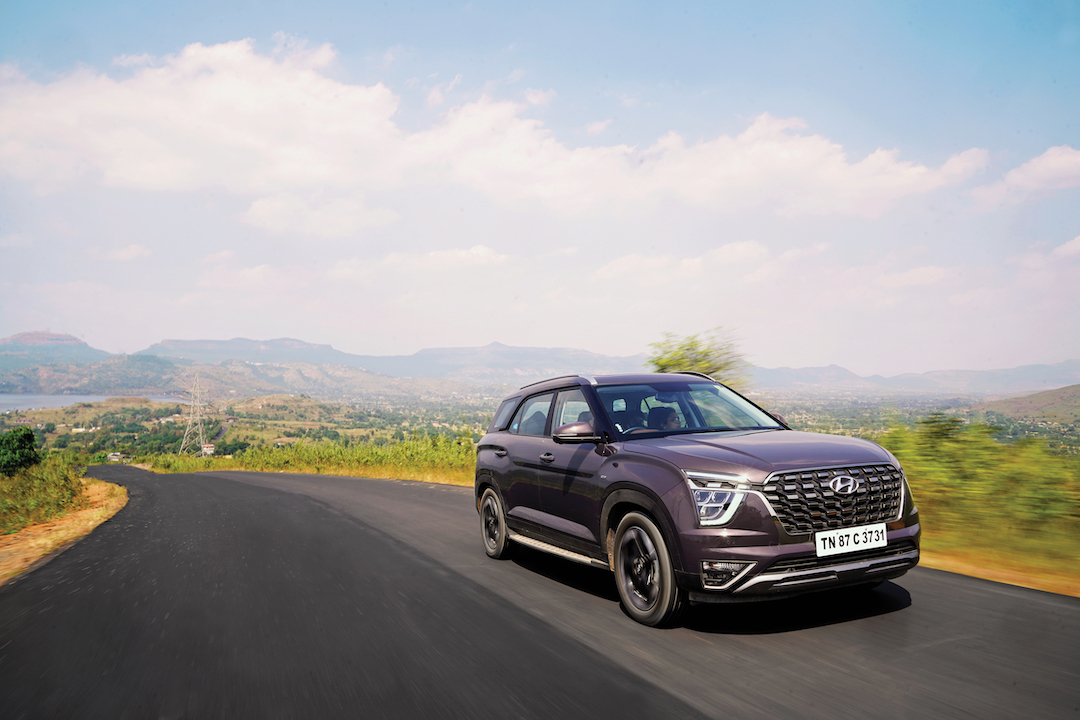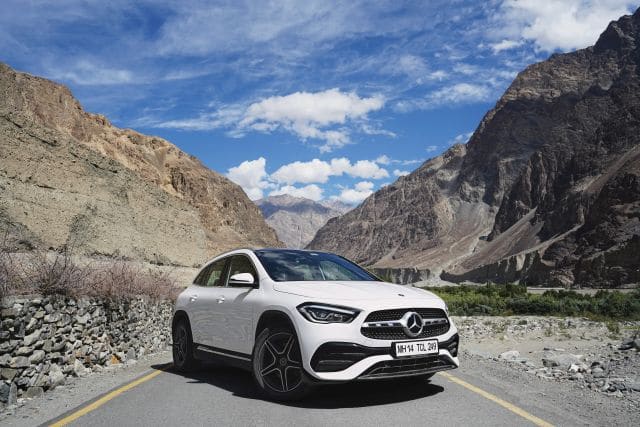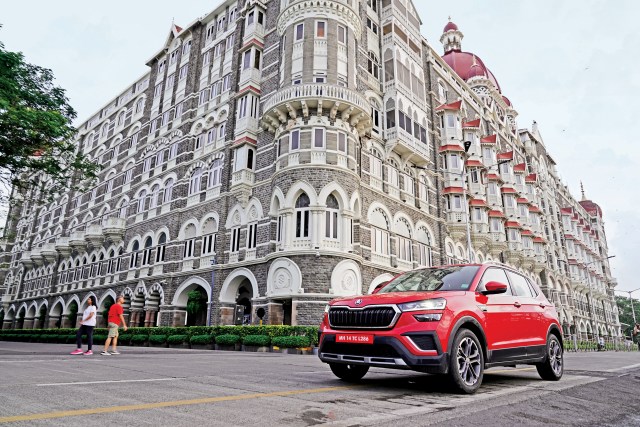Delhi is a veritable melting pot of historic time periods, dating back from the days of antiquity, cultures, cuisines, languages and peoples. The famed author William Dalrymple in his book, The City of Djinns, has eloquently outlined the entirely cosmopolitan culture of the city and what has led to such cosmopolitanism. Nevertheless, our interest lay in the most modern part of Delhi – Lutyen’s Delhi or New Delhi.
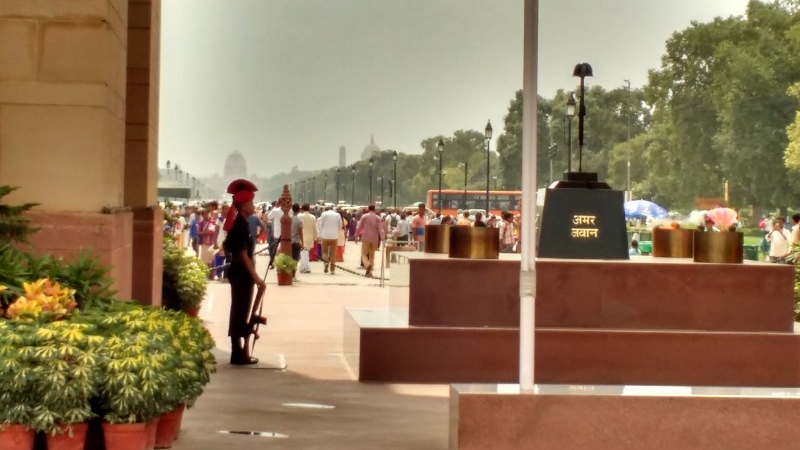
 Created by Sir Edwin Lutyens, there is no doubt that New Delhi is a relic of the Raj. In no small irony, every icon of a Free and Independent India in New Delhi is a British creation. Nevertheless, the symmetrical beauty of this part of Delhi cannot be ignored. On one end of the arrow straight Rajpath, the Rashtrapati Bhawan stands tall atop Raisina Hill with the Indian tricolour now fluttering proudly from its walls. At the opposite end stands the India Gate, which houses the Amar Jawan Jyoti. The India Gate and the Amar Jawan Jyoti are a silent tribute to the legions from the three services who laid down their lives in the interest of a Free and Sovereign India. To the left of the Rashtrapati Bhawan is the Indian Parliament. Gazing at the unique circular building passing by, it doesn’t fail to send a shiver down my spine. This was the place where at the stroke of the midnight hour on the night of 14-15 August, 1947, that our forefathers raised the Indian flag in place of the Union Jack that the mast was accustomed to. Just a kilometre and a half away lies Connaught Place (or Rajiv Chowk as it is now called). Back in the days of the Raj, this was the centre of New Delhi’s social life with its rows of shops, eateries, book stores and pubs. Nearly a century later things haven’t changed much and CP, as Connaught Place is fondly referred to, continues to be a hub of activity and social life.
Created by Sir Edwin Lutyens, there is no doubt that New Delhi is a relic of the Raj. In no small irony, every icon of a Free and Independent India in New Delhi is a British creation. Nevertheless, the symmetrical beauty of this part of Delhi cannot be ignored. On one end of the arrow straight Rajpath, the Rashtrapati Bhawan stands tall atop Raisina Hill with the Indian tricolour now fluttering proudly from its walls. At the opposite end stands the India Gate, which houses the Amar Jawan Jyoti. The India Gate and the Amar Jawan Jyoti are a silent tribute to the legions from the three services who laid down their lives in the interest of a Free and Sovereign India. To the left of the Rashtrapati Bhawan is the Indian Parliament. Gazing at the unique circular building passing by, it doesn’t fail to send a shiver down my spine. This was the place where at the stroke of the midnight hour on the night of 14-15 August, 1947, that our forefathers raised the Indian flag in place of the Union Jack that the mast was accustomed to. Just a kilometre and a half away lies Connaught Place (or Rajiv Chowk as it is now called). Back in the days of the Raj, this was the centre of New Delhi’s social life with its rows of shops, eateries, book stores and pubs. Nearly a century later things haven’t changed much and CP, as Connaught Place is fondly referred to, continues to be a hub of activity and social life.
Exploring Delhi can take a lifetime but we must head on eastwards and so we did. Exiting the humdrum of Delhi’s traffic, it’s a joy to drive on the 160-km long Yamuna Expressway. Once on this road, you’re left in no doubt that India is indeed shining. Our next stop, albeit a quick one would be Agra. Once the Imperial capital of Mughal India, the densely populated city is now famous for the Taj Mahal, the Red Fort and its signature petha (a sweet dish) and dal moth (a crispy savoury snack).
